My daughter said, “Why do LEDs need current limiting resistor?”. My kids will learn to use the LED. My son uses it with a 3V battery. My daughter uses it with a 12V battery although there is a difference.
But we will learn how to use a ballast resistor to limit the current flowing through the LED and prevent overcurrent that could burn out the LED. How do we use it with a 3V, 12V, or higher voltage power supply?
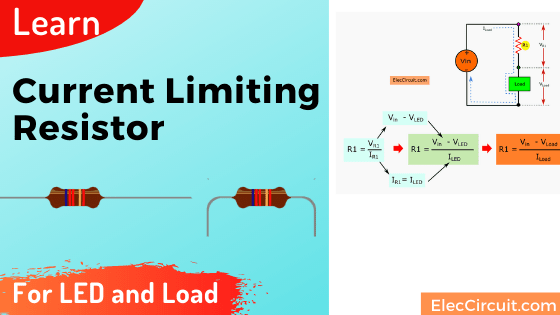
Why do you need a current limiting resistor?
Learning through doing is the best, we believe so. Experience is the only source of knowledge” – Albert Einstein
My son started his experiment with two AA 1.5V batteries in series on the 2xAA battery holder. He uses a voltmeter to measure its voltage and can read about 3V.
He put a 3mm red LED on a breadboard and applied the 3V battery to power that LED. It lights up quite brightly. Then he read the voltage of the battery at about 2.79V. Why is the voltage lower?
By the nature of such a small battery. When the load uses a current that exceeds the current that the battery can supply. Its voltage will decrease.
In this case, we understand that the LED uses too much current. And when he catches at it. It also has a relatively high temperature.
Experimenting connect LEDs alone
And my daughter wondered like his brother, “What happens if you don’t use a resistor with an LED?”
From the top circuit of brother. When she uses the white LED, it can work normally. It emits a normal glow, consumes about 20mA and the voltage of the 3V battery does not drop.
She was confused. So she replaced it with a 12V battery and measured its current.
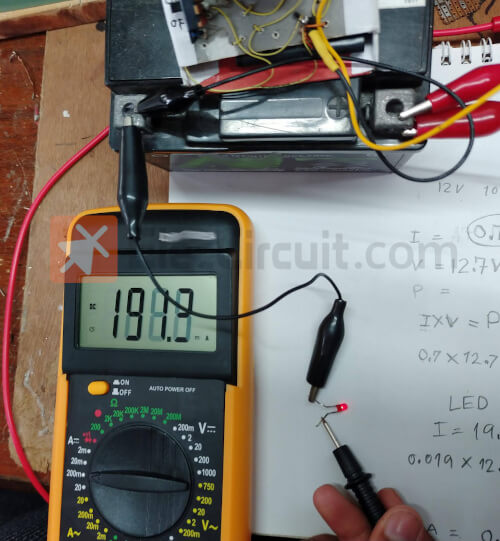
We can see that the 3 mm Red LED will only light for about 3 seconds. And we get a reading of about 190mA of current flowing through it.
In our experience, when we applied the voltage to it far more than its level. The LED will receive more than 50% current. It will overheat, burn internally, and eventually fail.
In this case, a typical LED is designed for a current of about 10mA. So it’s definitely damaged.
Recommended: How to use easily LEDs
In our experience, when we applied the voltage to it, it was far higher than its level (about 1.8V or 3.3V for the white LED). The LED will receive 10 times more current than it can withstand. It will overheat, burn, and eventually break.
A typical LED is designed for a current of about 10mA. So it’s definitely damaged.
We need to reduce the voltage to 1.8V and the current to 10mA.
Meet current limiting resistor
The most common way to solve this problem is to add resistors in series with the LEDs. We usually call them the current limiting resistors.
How many the resistance-R1?
In the circuit diagram, they are the series circuit.
We can find the resistance of R1 by using Ohm’s Law triangle.
R = V / I
We want the resistance (R). We need to know voltage (V) and Current (I) before.
1. Now we know the current.(IR1)
According to the principle of the circuit
The current flowing through all device is equal.
IR1 = ILED
When the LED use the current approximately 20mA.
So the current of current is 20mA, too.
2. The voltage of resistor (VR1) is what to look for!
When both resistor and LED connected in series. Then parallel or across with the 3V battery.
Thus, VR1 combined with VLED—voltage of LED— is equal to a 3V battery.
When we know the voltage of LED is 1.8V so I know the resistor’s voltage is?
= 3V – 1.8V
= 1.2V
Therefore:
Resistance of R1 = 1.2V / 2mA
= 60 ohms
But this value can be bought in all store.
So we use 56 ohms better.
We can summarize a simple formula:
R1 = (Vin-VLED) / ILED. or
R1 = (Vin – Vload) / Iload
You look at block diagram. It is clear better.
What Power of the current limiting resistor
My child asked, how much we should use the size of the resistor?
From ohms law: P = V x I
V = voltage of resistor = 1.2V
I = ILED = 20mA = 0.02A
P = 1.2V x 0.02A
= 0.024 watts
So, we can use 0.25W resistor.
Then, he uses the ElectroDroid on mobile to find the resistor color code.
Next, draw and color it on the notebook as Figure 5
and later we put the 56 ohms resistor into the breadboard and measure the voltage across LED again. It makes voltage low down to 1.8V and LED is normal.
How to convert voltage 12V to 6V relay
I would like to show you another example. Suppose you have to use 6V relay.
It is 6V 80 ohms, SPDT relay.
But you need to use it with 12V battery. It is so not good.
Because It uses the high current. Since, resistance coil is 80 ohms. When use 12V battery. The relay has too many currents flowing coil. It is about 0.15A (150mA). From
I = 12V / 80 ohms
= 0.15A
The battery is fast out of power.
And important! The relay coil is too hot.
We have many ways to reduce voltage. But using the resistor is an inexpensive way.
In the circuit is a similar to above circuit. We use the relay coil instead of LED.
Using a resistor reduce the voltage to relay.
Diode-D1 protects other parts from the high voltage pulse that is generated in the relay coil when the relay is switched OFF.
Finding the resistor-R1
Since Resistor-R1 = (Vin – Vload) / Iload
Vin = 12V battery
Vload = voltage of relay coil = 6V
Iload is the current flow the relay coil. But now we do not know it. Since it shows the resistance of the coil, 80 ohms.
From ohms law
I = V / R
V = 6V , R = 80 ohms
R = 6 / 80
= 0.075A or 75mA.
So, Iload is 0.075A
Put it in above formula again.
R1 = (12V – 6V) / 0.075A
= 80 ohms But this resistance cannot find in a normal store.
So we should use 82 ohms.
Next, we need to use a suitable power of resistor.
P = V x I
V = 6V
I = the current of relay = 0.075A
So power of resistor is.
= 6V x 0.075A
= 0.45W
We can use 82 ohms 0.5W resistor.
Note: I taught my son to use this current-limiting resistor many years ago. and recently I taught my daughter this again. It is the basics that beginners learning electronics should understand. Even though we have different backgrounds. But I believe that experience through experimentation is the origin of knowledge.
GET UPDATE VIA EMAIL
I always try to make Electronics Learning Easy.
Related Posts

I love electronics. I have been learning about them through creating simple electronic circuits or small projects. And now I am also having my children do the same. Nevertheless, I hope you found the experiences we shared on this site useful and fulfilling.
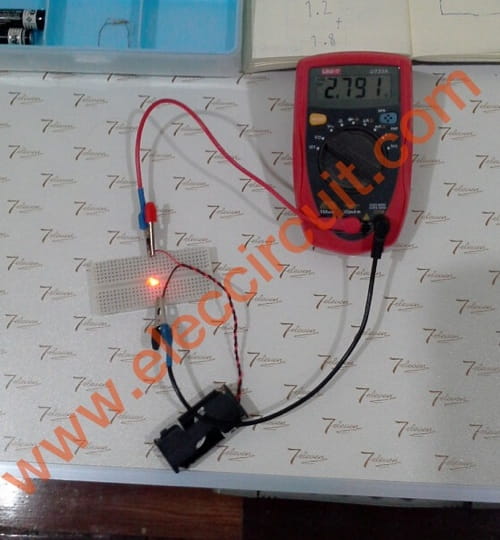
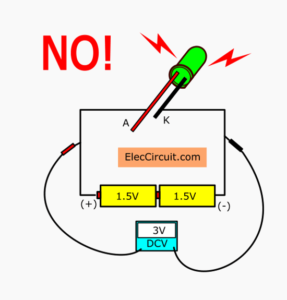
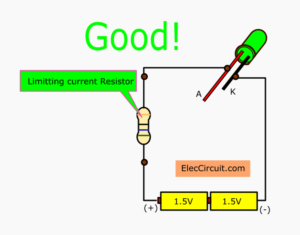
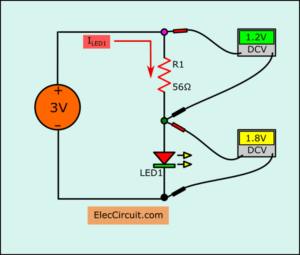

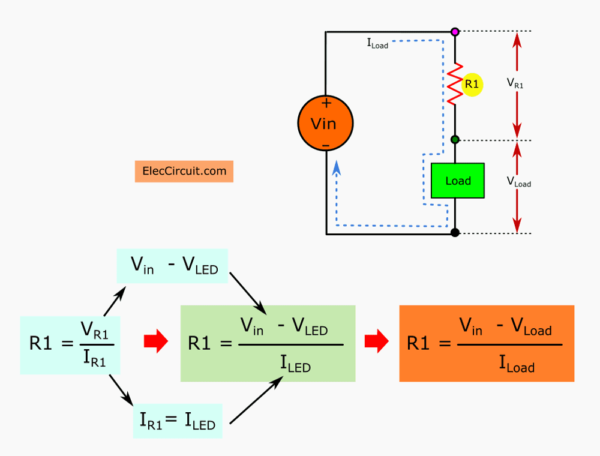
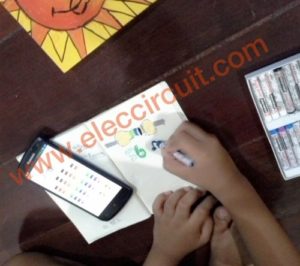
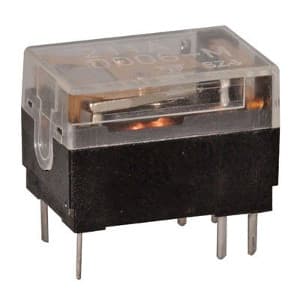
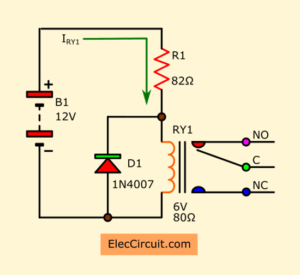
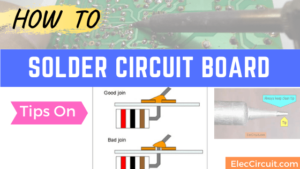
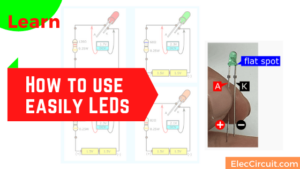
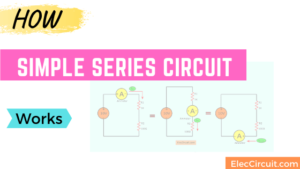

This Is A Very Important Topic To Prevent You From Burning Out LED’S!! Many Thanks!!!!
très bon articles un grand merci cordialement
Hi, GROSCOLAS JEAN MICHEL
Merci, joyeux Noël et bonne année.
THANKS I GOT THE ANSWER TO MY QUESTION